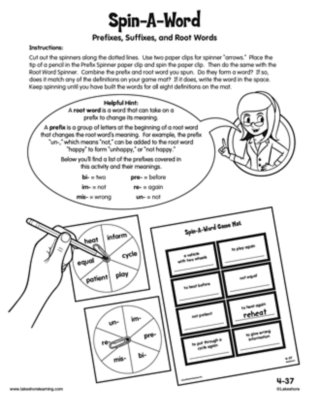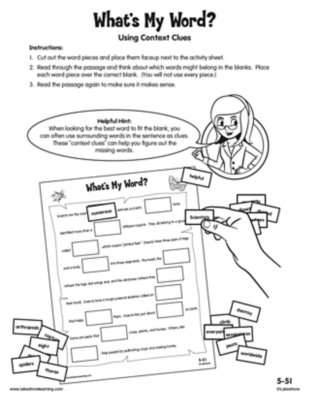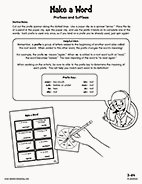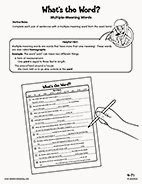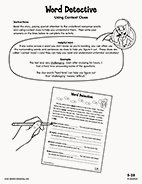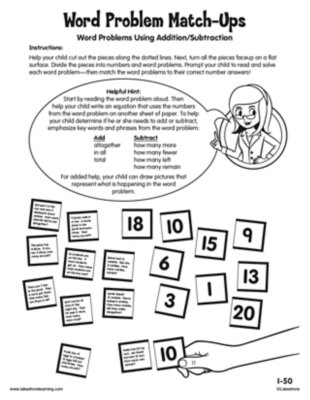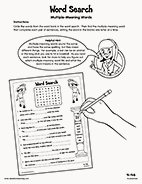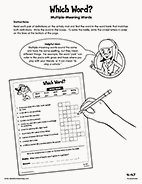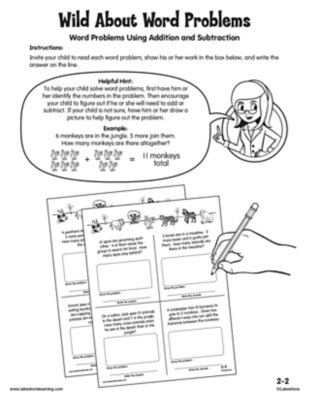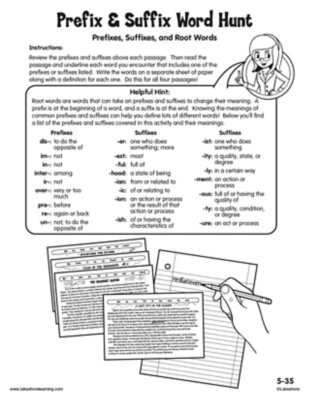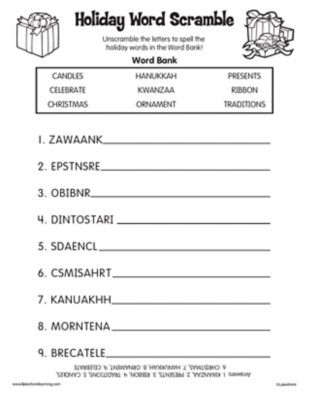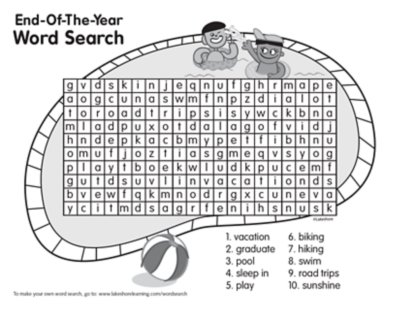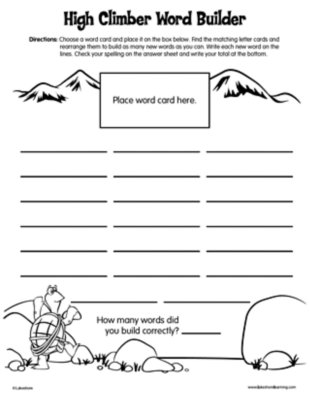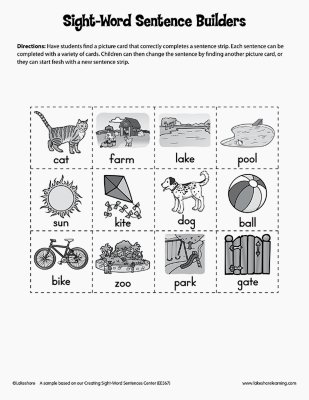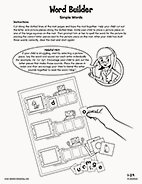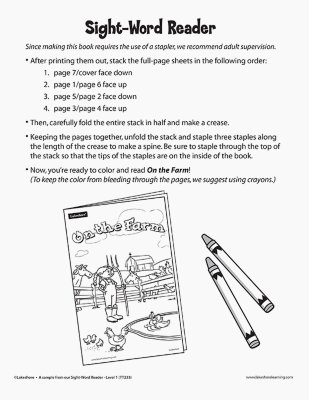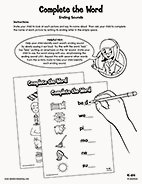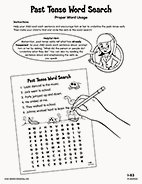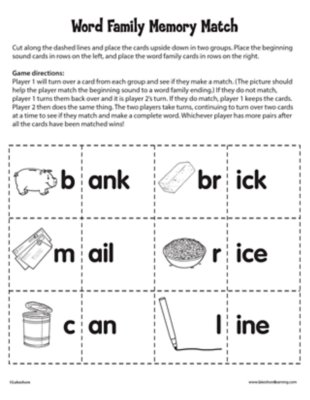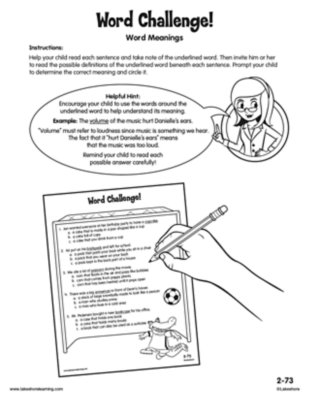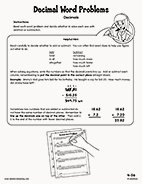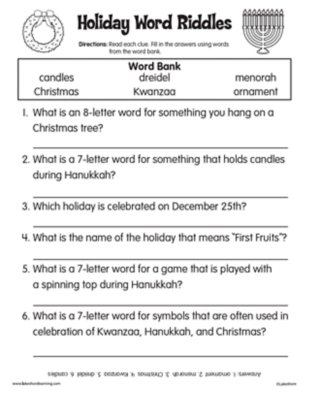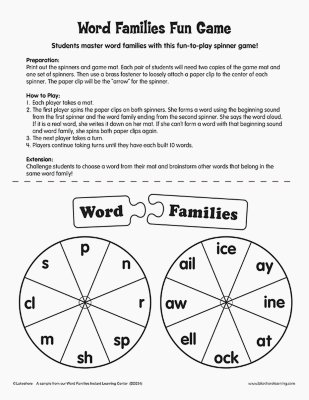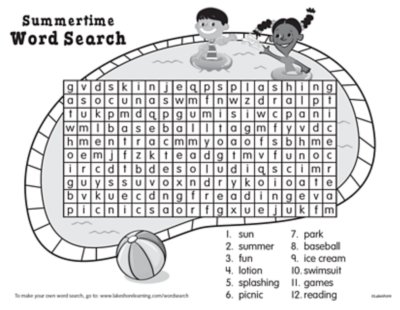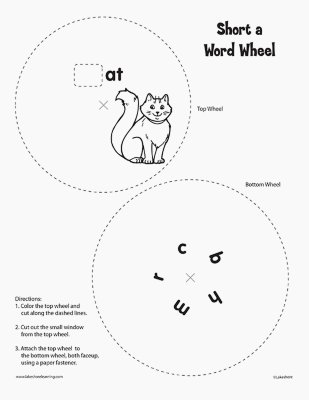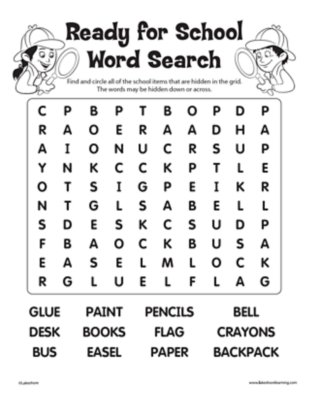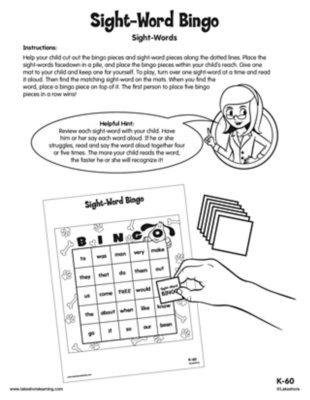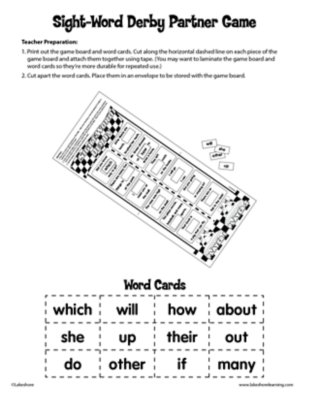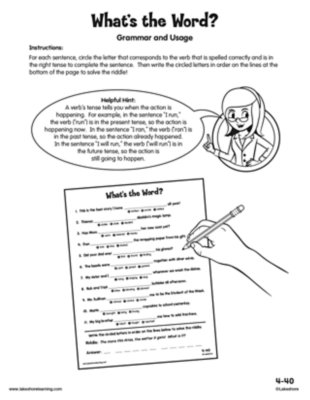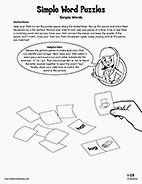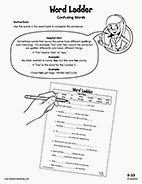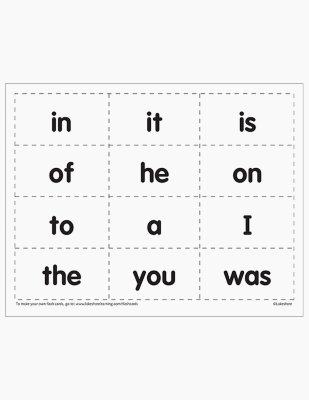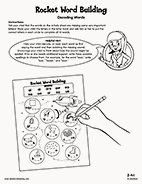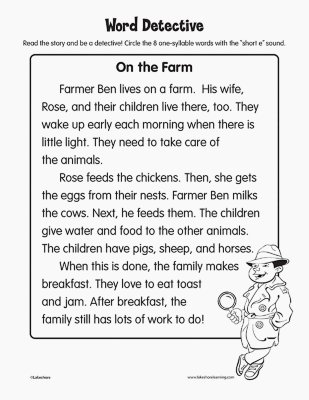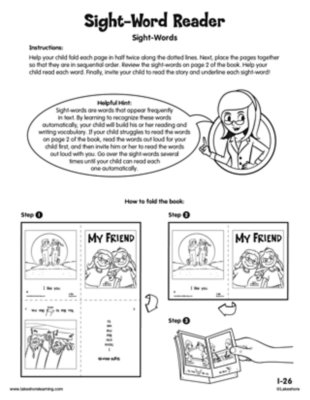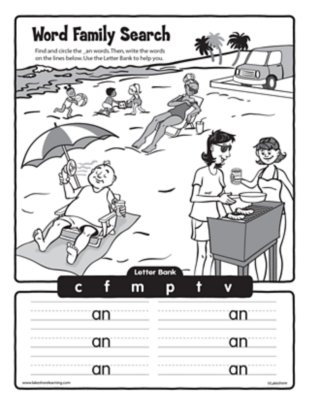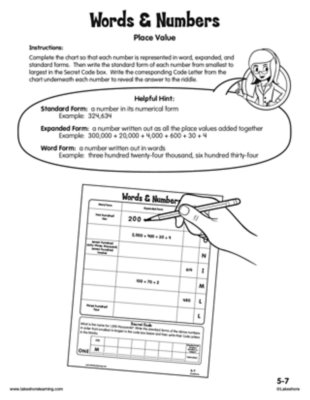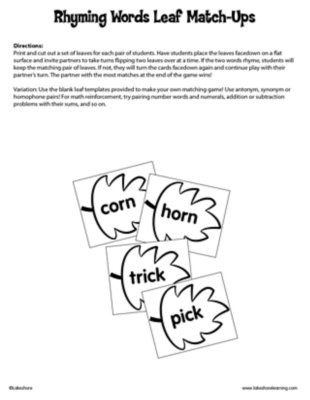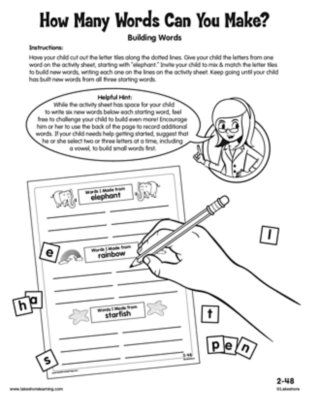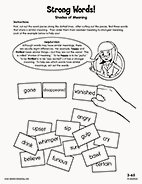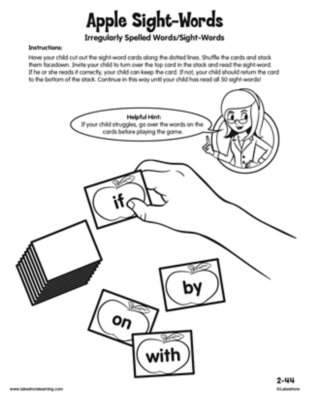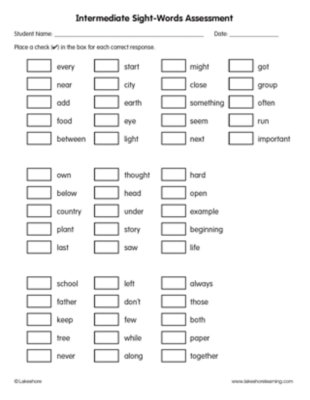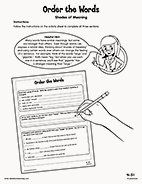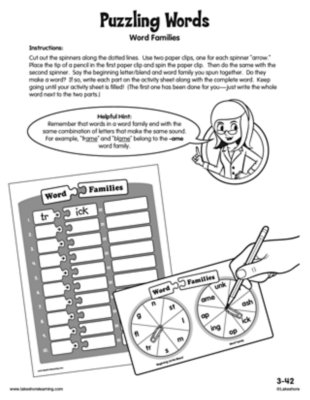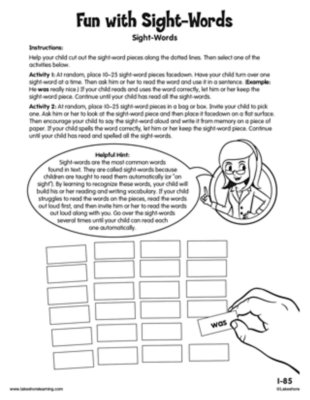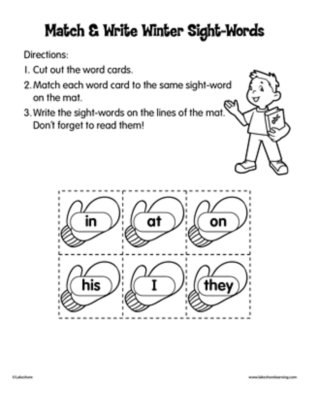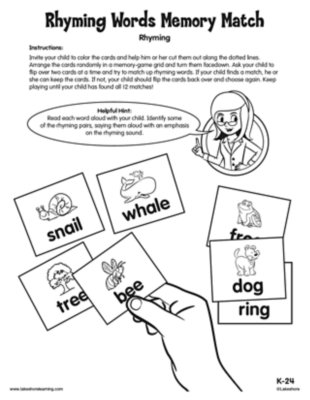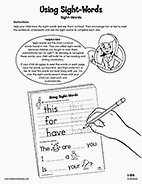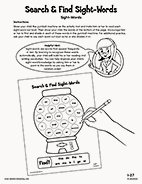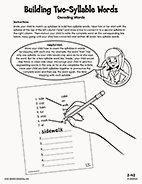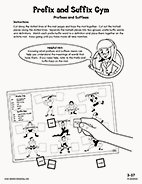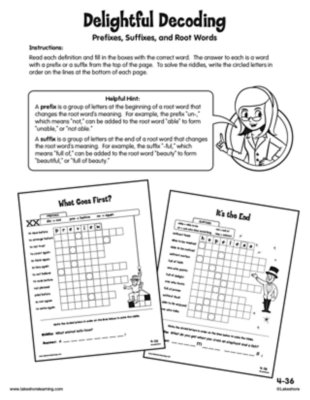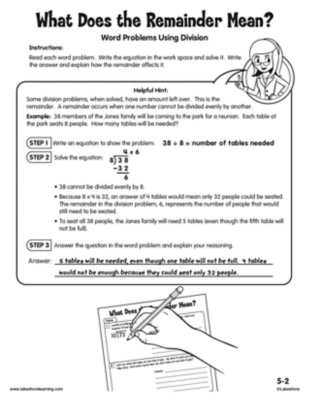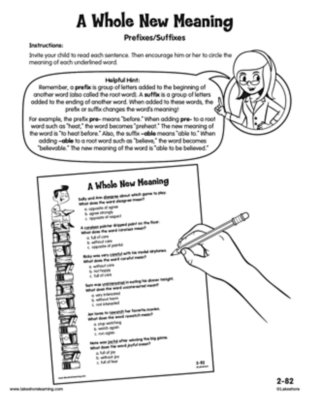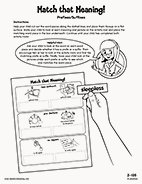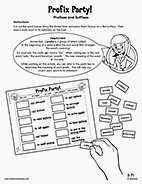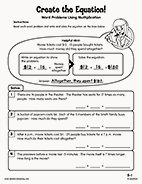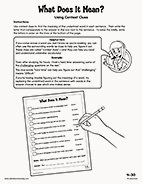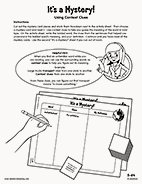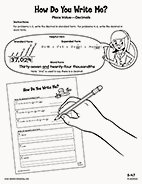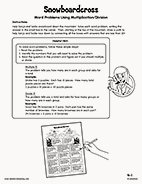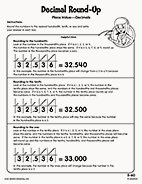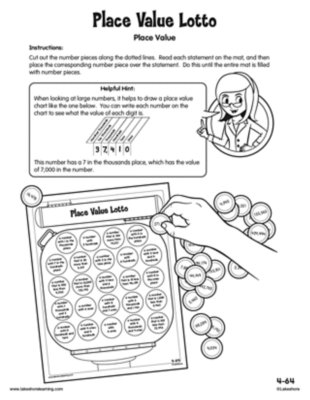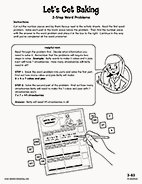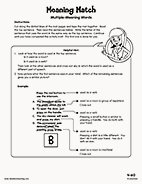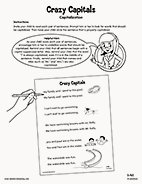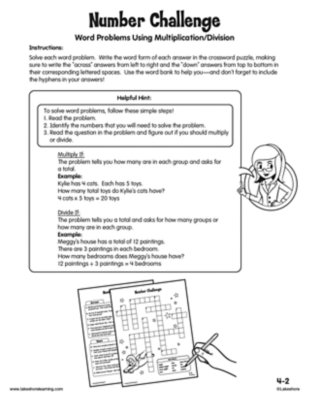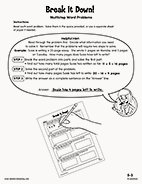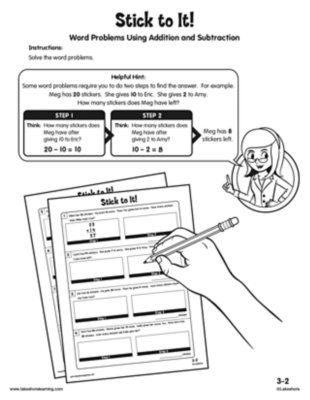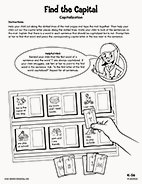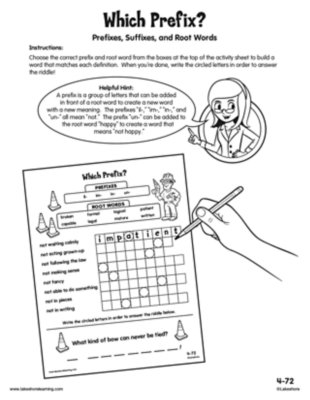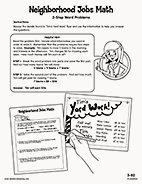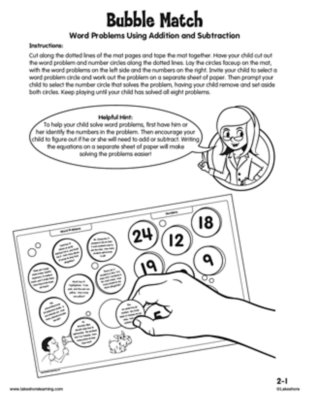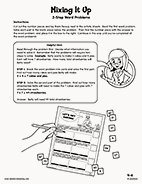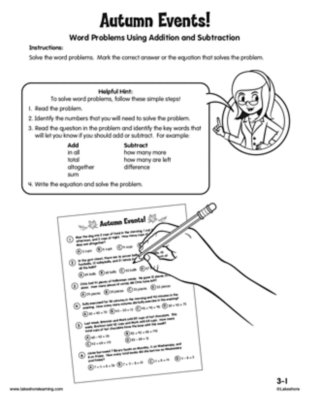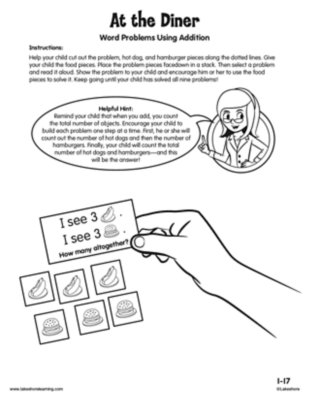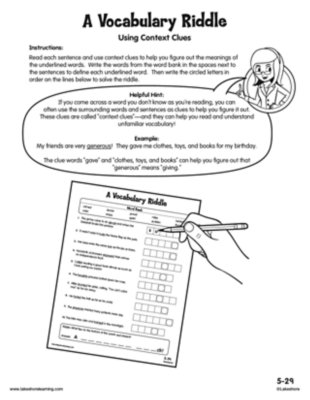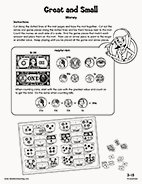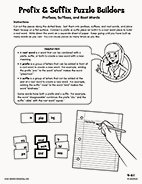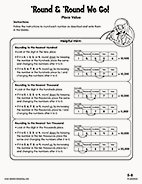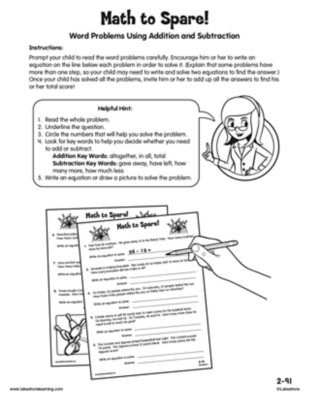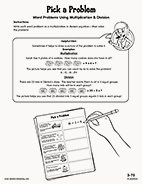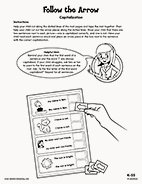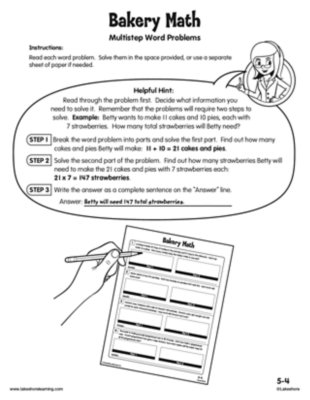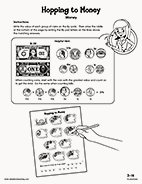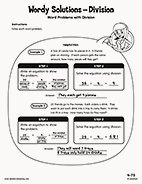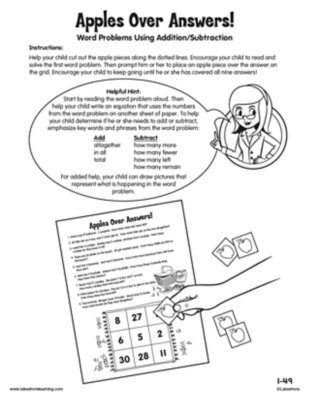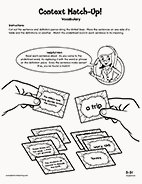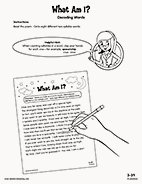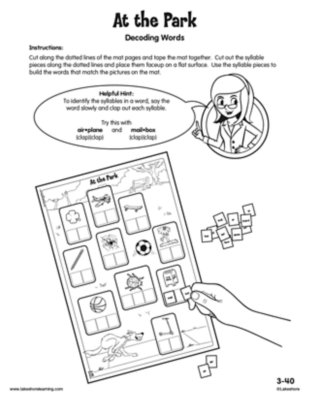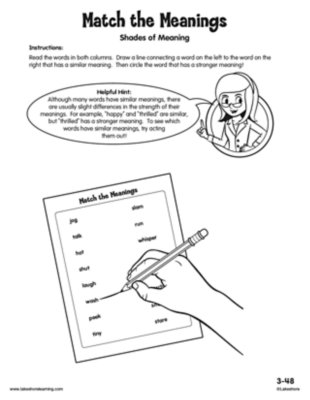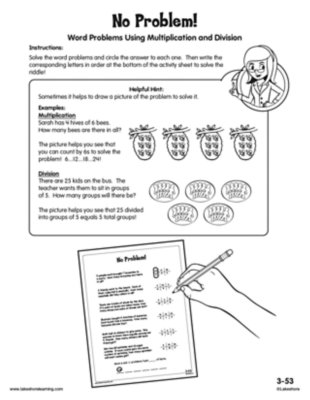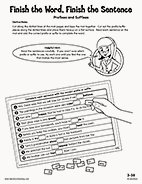
When entering third grade, your child should be able to figure out the meaning of a new word when a prefix or suffix is added to a familiar word, such as figuring out the meaning of “unhappy” based on knowledge of the word “happy.”
View worksheetWhen entering fourth grade, your child should be able to figure out the meaning of a word when a prefix or suffix is added to a familiar root word, such as figuring out what the word “unhappy” means based on the knowledge that “un-” means “not.”
View worksheetDuring fifth grade, your child will learn to figure out the meaning of an unfamiliar word or phrase by using clues in the text, such as cause/effect relationships and comparisons. For example, in the following sentence, you can determine that the word “chastened” means “punished” by looking at the cause and effect: “When Judy found out that her son had cheated, she chastened him by taking away his video games.”
View worksheetDuring third grade, your child will learn to figure out the meaning of a new word when a prefix or suffix is added to a familiar word, such as figuring out the meaning of “preheat” based on the knowledge that “pre-” means “before.”
View worksheetDuring fourth grade, your child will be asked to figure out the correct meanings of multiple-meaning words that appear in fourth-grade texts, such as knowing when the word “pitcher” refers to a container for pouring liquids or a person throwing a ball.
View worksheetWhen entering fifth grade, your child should be able to figure out the meaning of an unfamiliar word or phrase by using clues in the text, such as definitions or examples.
View worksheetDuring first grade, your child will be asked to solve word problems that involve adding and subtracting within 20.
View worksheetWhen entering fourth grade, your child should be able to figure out the correct meanings of multiple-meaning words that appear in third-grade texts, such as knowing when the word “shower” refers to a rainstorm or a place to wash off.
View worksheetWhen entering fourth grade, your child should be able to figure out the correct meanings of multiple-meaning words that appear in third-grade texts, such as knowing when the word “shower” refers to a rainstorm or a place to wash off.
View worksheetWhen entering second grade, your child should be able to solve word problems that involve adding and subtracting within 20. This includes solving problems with up to three numbers. For example, 5 + 7 + 3 = 15.
View worksheetWhen entering fifth grade, your child should be able to use common, grade-appropriate Greek and Latin prefixes, suffixes and roots to figure out the meaning of a word. For example, “telegraph,” “photograph” and “autograph” all contain the Greek root “graph,” which refers to something that is written or drawn.
View worksheetWhen entering first grade, your child should be able to spell simple words by sounding them out, such as “c-a-t” and “f-o-x.”
View worksheetDuring kindergarten, your child will learn to identify the ending sounds in simple words and identify the letter that makes them, such as identifying the “n” sound in “pen.”
View worksheetDuring first grade, your child will learn subtleties in words’ meanings and make real-life connections between words and their use, such as understanding that both a bed and sofa could be called cozy.
View worksheetDuring second grade, your child will learn to determine the meanings of grade-appropriate words based on the context in which they are used.
View worksheetDuring fourth grade, your child will learn to write fractions with denominators of 10 or 100 as decimals, such as writing 3/10 as 0.3 and writing 34/100 as 0.34. Your child will also learn to add and subtract amounts of money using decimals.
View worksheetDuring kindergarten, your child will learn to read common, high-frequency words by sight, such as “the,” “of,” “to” and “you.”
View worksheetWhen entering fourth grade, your child should know how to correctly use words in sentences and should know many rules of English grammar, including parts of speech, regular and irregular plural nouns, regular and irregular verbs, verb tenses, subject-verb agreement, sentence structure and more.
View worksheetWhen entering first grade, your child should be able to spell simple words by sounding them out, such as “c-a-t” and “f-o-x.”
View worksheetWhen entering fifth grade, your child should be able to correctly use frequently confused words, such as “to” and “two” or “there” and “their.”
View worksheetWhen entering second grade, your child should be able to decode—or read and understand—regularly spelled one- and two-syllable words, such as “wet” or “seven.”
View worksheetWhen entering first grade, your child should be able to read common, high-frequency words by sight, such as “the,” “of,” “to” and “you.”
View worksheetWhen entering fifth grade, your child should be able to compare and round multidigit numbers. Your child should also be able to read and write multidigit numbers in number, word and expanded form. For example, 765; seven hundred sixty-five; 700 + 60 + 5.
View worksheetWhen entering second grade, your child should be able to build and spell simple words by blending sounds together. For example, when given the letters “a,” “e,” “c,” “b,” “d,” “g” and “s,” your child should be able to use the letters to build and read at least three words.
View worksheetDuring third grade, your child will be expected to distinguish between shades of meaning among related words—such as “wondered,” “suspected,” “believed” and “knew”—and sort the words in order from the weakest to the strongest meaning.
View worksheetWhen entering second grade, your child should recognize and read common grade-appropriate sight-words and words with irregular spellings, such as “said,” “come” and “does.”
View worksheetWhen entering fourth grade, your child should be able to distinguish between shades of meaning among related words, such as “wondered,” “suspected,” “believed” and “knew.”
View worksheetWhen entering third grade, your child should be able to use common spelling patterns to decode and spell words easily, such as “cart,” “chart” and “smart.”
View worksheetDuring first grade, your child will learn to spell frequently occurring irregular words, such as “know” and “could,” and learn to recognize and read them on sight.
View worksheetWhen entering kindergarten, your child should be able to recognize and match words that rhyme.
View worksheetDuring first grade, your child will learn to spell frequently occurring irregular words, such as “know” and “could,” and learn to recognize and read them on sight.
View worksheetWhen entering first grade, your child should be able to read common, high-frequency words by sight, such as “the,” “of,” “to” and “you.”
View worksheetWhen entering second grade, your child should be able to decode—or read and understand—regularly spelled one- and two-syllable words, such as “wet” or “seven.”
View worksheetWhen entering third grade, your child should be able to figure out the meaning of a new word when a prefix or suffix is added to a familiar word, such as figuring out the meaning of “unhappy” based on knowledge of the word “happy.”
View worksheetWhen entering fourth grade, your child should be able to figure out the meaning of a word when a prefix or suffix is added to a familiar root word, such as figuring out what the word “unhappy” means based on the knowledge that “un-” means “not.”
View worksheetWhen entering fourth grade, your child should be able to use clues within a sentence to figure out the meaning of an unfamiliar word or phrase. For example, in the following sentence, the underlined portion provides a clue to what the word “aviary” means: The zoo’s aviary was filled with owls, bluebirds, parrots, parakeets and cuckoos.
View worksheetWhen entering fifth grade, your child should be able to multiply and divide to solve word problems and be able to solve multistep word problems that involve multiplication and division.
View worksheetDuring second grade, your child will learn to figure out the meaning of a word when a prefix or suffix is added to a familiar root word, such as figuring out the meaning of “unhappy” based on the knowledge that “un-” means “not.”
View worksheetDuring second grade, your child will learn to figure out the meaning of a word when a prefix or suffix is added to a familiar root word, such as figuring out the meaning of “unhappy” based on the knowledge that “un-” means “not.”
View worksheetDuring third grade, your child will learn to figure out the meaning of a new word when a prefix or suffix is added to a familiar word, such as figuring out the meaning of “preheat” based on the knowledge that “pre-” means “before.”
View worksheetWhen entering fifth grade, your child should be able to multiply and divide to solve word problems and be able to solve multistep word problems that involve multiplication and division.
View worksheetWhen entering fourth grade, your child should be able to use clues within a sentence to figure out the meaning of an unfamiliar word or phrase. For example, in the following sentence, the underlined portion provides a clue to what the word “aviary” means: The zoo’s aviary was filled with owls, bluebirds, parrots, parakeets and cuckoos.
View worksheetDuring fifth grade, your child will learn to figure out the meaning of an unfamiliar word or phrase by using clues in the text, such as cause/effect relationships and comparisons. For example, in the following sentence, you can determine that the word “chastened” means “punished” by looking at the cause and effect: “When Judy found out that her son had cheated, she chastened him by taking away his video games.”
View worksheetDuring fifth grade, your child will learn to read and write decimals in standard form, word form and expanded form to the thousandths place and round decimals to any place.
View worksheetWhen entering fourth grade, your child should know how to solve word problems involving multiplication and division within 100.
View worksheetDuring fifth grade, your child will learn to read and write decimals in standard form, word form and expanded form to the thousandths place and round decimals to any place.
View worksheetDuring fourth grade, your child will learn to identify the value of each digit in a multidigit number. Your child will also learn to read and write multidigit numbers in number, word and expanded form. For example, 765; seven hundred sixty-five; 700 + 60 + 5.
View worksheetDuring third grade, your child will learn to solve two-step word problems involving addition, subtraction, multiplication and division.
View worksheetDuring fourth grade, your child will be asked to figure out the correct meanings of multiple-meaning words that appear in fourth-grade texts, such as knowing when the word “pitcher” refers to a container for pouring liquids or a person throwing a ball.
View worksheetWhen entering first grade, your child should understand that sentences begin with a capital letter and that the word “I” is also capitalized. Your child should also be able to recognize and name the punctuation marks at the end of sentences, including periods, question marks and exclamation points.
View worksheetWhen entering fourth grade, your child should know how to solve word problems involving multiplication and division within 100.
View worksheetWhen entering fifth grade, your child should be able to solve multistep word problems using addition, subtraction, multiplication and division, including problems with remainders.
View worksheetWhen entering third grade, your child should be able to solve one-step and two-step word problems involving addition and subtraction within 100.
View worksheetDuring kindergarten, your child will learn that sentences begin with a capital letter and that the word “I” is also capitalized.
View worksheetDuring fourth grade, your child will learn to use common, grade-appropriate Greek and Latin prefixes, suffixes and roots to figure out the meaning of a word. For example, “telegraph,” “photograph” and “autograph” all contain the Greek root “graph,” which refers to something that is written or drawn.
View worksheetWhen entering second grade, your child should be able to figure out the correct meanings of multiple-meaning words, such as knowing when the word “bat” refers to a baseball bat or a flying animal.
View worksheetDuring third grade, your child will learn to solve two-step word problems involving addition, subtraction, multiplication and division.
View worksheetWhen entering second grade, your child should be able to solve word problems that involve adding and subtracting within 20. This includes solving problems with up to three numbers. For example, 5 + 7 + 3 = 15.
View worksheetWhen entering fourth grade, your child should know how to solve two-step word problems involving addition, subtraction, multiplication and division.
View worksheetWhen entering third grade, your child should be able to solve one-step and two-step word problems involving addition and subtraction within 100.
View worksheetWhen entering first grade, your child should be able to solve word problems that involve adding or subtracting within 10.
View worksheetWhen entering fifth grade, your child should be able to figure out the meaning of an unfamiliar word or phrase by using clues in the text, such as definitions or examples.
View worksheetWhen entering third grade, your child should be able to solve word problems that involve money, including dollar bills, quarters, dimes, nickels and pennies.
View worksheetDuring fourth grade, your child will learn to use common, grade-appropriate Greek and Latin prefixes, suffixes and roots to figure out the meaning of a word. For example, “telegraph,” “photograph” and “autograph” all contain the Greek root “graph,” which refers to something that is written or drawn.
View worksheetWhen entering fifth grade, your child should be able to compare and round multidigit numbers. Your child should also be able to read and write multidigit numbers in number, word and expanded form. For example, 765; seven hundred sixty-five; 700 + 60 + 5.
View worksheetDuring second grade, your child will learn to solve one- and two-step word problems involving addition and subtraction within 100.
View worksheetDuring third grade, your child will learn to solve word problems involving multiplication and division within 100.
View worksheetDuring kindergarten, your child will learn that sentences begin with a capital letter and that the word “I” is also capitalized.
View worksheetWhen entering fifth grade, your child should be able to solve multistep word problems using addition, subtraction, multiplication and division, including problems with remainders.
View worksheetWhen entering third grade, your child should be able to solve word problems that involve money, including dollar bills, quarters, dimes, nickels and pennies.
View worksheetDuring fourth grade, your child will solve word problems that involve multiplication and division.
View worksheetDuring first grade, your child will be asked to solve word problems that involve adding and subtracting within 20.
View worksheetWhen entering third grade, your child should be able to figure out the meanings of unknown words using a variety of strategies, such as looking at the context in which the word is used or consulting a dictionary.
View worksheetWhen entering third grade, your child should be able to decode—or read and understand—two-syllable words by applying word analysis skills and by sounding out words.
View worksheetWhen entering third grade, your child should be able to decode—or read and understand—two-syllable words by applying word analysis skills and by sounding out words.
View worksheetWhen entering third grade, your child should be able to distinguish shades of meaning among closely related words—such as “toss,” “throw” and “hurl”—and identify which word has the strongest meaning.
View worksheetDuring third grade, your child will learn to solve word problems involving multiplication and division within 100.
View worksheet
